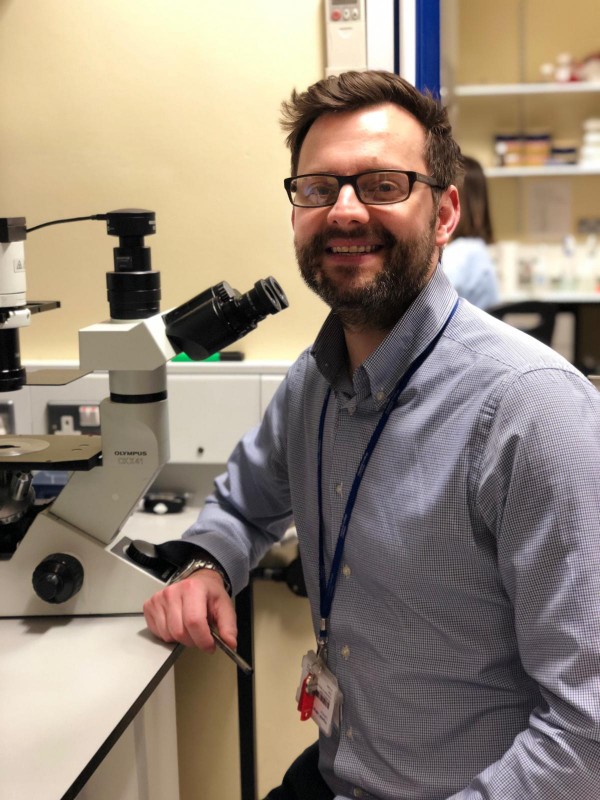By Jenna Stevens-Smith
March 15, 2019
Time to read: 4 minutes

Andrew Innes spent his time as a Chain-Florey Fellow studying the molecular mechanisms of senescence, a critical step in the biological aging of cells as well as a formidable barrier in the prevention of cancer.
Now a NIHR Clinical Lecturer in the Department of Haematology at Imperial College London. Andrew splits his time between the clinic and research, and between research in the Department of Haematology and within Jesus Gil’s Cell Proliferation group. But Andrew was also involved in the bone marrow stem cell transplant of the London patient which helped them achieve HIV remission.
The research published in Nature on 5 March is a proof of concept study that suggests that the CCR5 receptor is a viable target for HIV treatment. This is the second reporting of how a haematopoietic stem cell transplant can ‘cure’ HIV following the ‘Berlin patient’ a decade ago. As the previous only documented case of HIV remission, there were a lot of questions that remained unanswered from the ‘Berlin patient’ case, especially as they received two transplants and was also lacking a CCR5 receptor themselves. With this new research, the donor was CCR5 negative and the treatment helped to control his lymphoma, and also helped attack the HIV.
“This is a perfect example of bench to bedside and back again.”
This study was a huge collaborative effort between the clinicians who performed the technically difficult transplant procedure, the HIV team and also the academic labs to be confident that the patient’s HIV is in long-term remission. But also provides more evidence for lab research to explore CCR5 as a viable target for HIV treatment.
It is important to emphasise that while this study is hugely important scientifically, anti-retroviral drugs are still the best option for HIV treatment.
Should doctors do research?
We asked Andrew Innes about balancing all the responsibilities of being a clinician with being a researcher, and the benefits of doing both.
“Doctors should do research. It is challenging to balance the two, but if you love what you’re doing, then you find a way to be as flexible as you can and make it work. Even if you are someone that doesn’t want to follow the clinician-scientist path, doing research as part of your training can open your eyes to the possible collaborations to help move things forward. That is what research is about after all. The Chain-Florey scheme immersed me in the basic science environment and gave me a grounding to be able to form fruitful collaborations.”
Andrew Innes also experienced further benefits from being a Chain Florey fellow:
“You are actively engaged in scientific collaborations. You are not just involved with the transplant process and focussed on getting your patient through the procedure, but also the scientific merit of the whole process. As a clinician, it also gives you confidence that the science you are doing is good enough for high impact journals like Nature.”
His advice for current and future Fellows:
“Learn from the others in your lab and don’t be reticent to ask! And everyone has a pull back to the clinic. It is one of the criteria that makes you a Chain-Florey Fellow. But it is okay to have that pull, you just have to find your balance between the clinic and the science.”
The 10-year anniversary of the Chain Florey scheme is being celebrated on 21 March. You can celebrate with us by attending.
HIV-1 remission following CCR5Δ32/Δ32 haematopoietic stem-cell transplantation was published in Nature on 5 March 2019, you can read the article in full here: https://www.nature.com/articles/s41586-019-1027-4